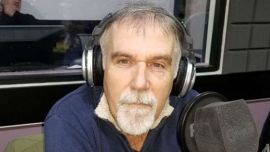You were deputy director-general and chief -of-staff at the International Atomic Energy Agency (IAEA) during the process of checks and inspections prior to the 2015 Iran nuclear deal (from which the US under Donald Trump has walked away recently).
You were also a witness of the Leap Day Agreement, when on Febr uar y 29, 2012,Kim Jong-un committed North Korea to suspending its nuclear weapons tests and uranium enrichment. Forty days later, Pyongyang held a satellite launch, thus killing the deal signed with the US.
In October 2017, when interviewed by the Times, you said that “What we are witnessing with North Korea is a slow-motion train-wreck.” Our readers would much appreciate your take of the summit that took place on Tuesday, June 12, in Singapore.
My impression is that the summit has produced a very interesting outcome for North Korea, with a window of opportunity. Details about warheads or nuclear installations to be inspected or dismantled were not expected as a result of this meeting. Instead, and because on each side there were two leaders, a document with strong political commitments was delivered, stating the direction and some clear principles of this new process that has commenced.
Which are the principles you are referring to?
In the very concise declaration signed by President Trump and Chairman Kim there are four main points.
The first one refers to a new start in the bilateral relations, which not only includes re-establishing diplomatic relations but opens the possibility of a peace treaty. The second point says that the two countries will join efforts to build a lasting and stable denuclearisation of the Korean peninsula...
I’m sorry to have to stop you. There is a controversy regarding the denuclearisation of the peninsula. Is it meant solely for North Korea’s nukes or does it include other major powers acting in the terrain, i.e. Russia, China and the US?
Well, that is a nuance because what the declaration says is that the DPRK [Democratic People’s Republic of Korea] commits itself to working toward the complete denuclearisation of the peninsula, which means that concrete steps should definitely come from the DPRK.
The third point is the one that reaffirms the April 27, 2018, Panmunjom declaration signed by the leaders of both Koreas, by which they had committed themselves to working for the complete denuclearisation of the peninsula.
And lastly comes the part where Pyongyang commits itself to taking the necessary steps towards the denuclearisation goal. It means a clear recognition from North Korea’s part that it has to take steps [toward] this. So, the one-and-a-half page declaration signed between the US and the DPRK indicates this is going to be a process and not an overnight deal.
What about the comparisons with other denuclearisation deals? US Secretary of State Mike Pompeo seems to have crewed up by mentioning the Libya case (Chairman Kim suspended the ongoing negotiations because of that misstep…)
This is not going to be a sort of rollback, Libya-style process, taking weapons from the hands of North Korea and running away. In the Trump-Kim statement there is a line explaining that both countries will implement the stipulations of this joint agreement fully and expeditiously while at the same time holding follow-up negotiations.
Tell me about the US concession to North Korea over the halting of all military exercises with Seoul. Does this mean the US will in the near future withdraw its 28,500 military troops from the peninsula?
This shows that the US has already put something on the table. It is a confidence-building measure. Regarding the withdrawal, it could take place sometime in the future.
If a US demilitarisation of the peninsula were to happen, what would be the reactions from China and Japan, the neighbouring powers?
I cannot speculate much on that. What I am certain of is that China would view it with a favourable eye. Going back to halting the military exercises, it is part of setting the stage for a meaningful negotiation
What are the main differences between the processes of Iran and Korea?
In the case of Iran it was a pre-emptive process; in North Korea’s we have a case for disarmaiment.
In the case of Iran, there were indications that Teheran had been working on a programme that contained military dimensions. So the deal, known as Joint Comprehensive Plan of Action (JCPOA), contemplated a framework with measures so that Teheran would not go down the path of nuclear weapons.
In North Korea’s case, there is a nuclear weapon arsenal estimated at between 20 and 60 nuclear warheads. So the range of activities and procedures that would be needed in this case to check and deactivate the nuclear facilities and weapons is much bigger and complex.
There has been much criticism of the US government’s withdrawal from the 2015 Iran deal, on the basis that it does not trust Teheran, nor condemn the violation of human rights in the country, nor its involvement in terrorism in Syria and other countries. North Korea and especially its ruling dynasty have been involved in murders, deportations, concentration camps, torture, counterfeiting and drug-dealing, as well as starving to death its population. How does this process tally up with the human rights and terrorism issues argued in the Iranian case?
In both cases, negotiations have been focused in the nuclear issue. No other element has been included in the process.
You have been working for many decades on nuclear issues across the globe. What are the nuclear perspectives for the near future, especially when the geopolitical chessboard is changing by the minute?
North Korea’s rapprochement to the world is a positive and promising sign at a moment when there are tensions, for example, on the Iran front. It is very important because in 18 months Argentina will preside over the Non-Proliferation Treaty (NPT) Review Conference to be held in New York. The NPT is the main treaty which regulates nuclear proliferation issues in the world.
One of its serious shortcomings has been North Korea, which challenged the non-proliferation regime in the 90s and denounced the Treaty. The general hope is that if the North Korean issue starts to be managed in a way that could resolve these tensions, it could mean a real improvement in the global non-proliferation scenario.
By the end of this month, Washington will be commemorating 50 years of the NPT. The depositaries of this treaty, the UK, Russia and the US, in a display of commendable solidarity are putting together this event and have invited me, as the representative of Argentina who will preside over the Non-Proliferation Conference in 18 months, to address this conference.
To contribute in this way to the global nuclear governance is yet another example of Argentina’s intelligent integration and reinsertion into the world.


























Comments